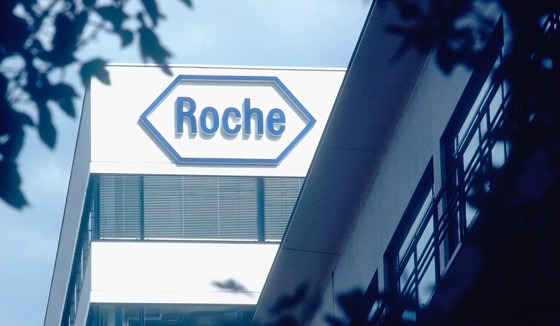
Roche offered a more positive account of its business following the loss of patent protection for its cancer blockbusters at an investors’ day yesterday, highlighting a rich pipeline with 19 late-stage trials due to generate data in the next 18 months.
Roche currently has 11 new molecular entities (NMEs) in its late-stage portfolio and another 11 line extensions for already approved drugs in the offing, said Hal Barron, the group’s head of R&D.
Roche is investing around 50 per cent of its near $9bn annual R&D spend in oncology, so unsurprisingly much of the main presentation focused on progress in this area, and chief executive Severin Schwan reaffirmed the firm’s commitment to personalised medicine.
“More than 60 per cent of our pharmaceutical pipeline projects are coupled with the development of companion diagnostics in order to make treatments more effective,” he said.
The star of the show as expected was T-DM1 (trastuzumab emtansine), a follow-up to Roche’s phenomenally successful breast cancer drug Herceptin (trastuzumab) – due to start losing patent protection in 2014. T-DM1 is an antibody-drug conjugate (ADC) which links the Herceptin antibody to a cytotoxic payload and was filed for approval last month.
Other near-term cancer projects include onartuzumab as a second- or third-line therapy for non-small cell lung cancer and obinutuzumab for chronic myeloid leukaemia and non-Hodgkin’s lymphoma, which could emerge as a successor to Roche’s MabThera/Rituxan (rituximab), another big-selling but maturing product with patent expiry expected in 2015.
Avastin (bevacizumab) is another big oncology product at Roche, and the company is developing a new drug for use in combination with that could expand its utility in other cancers. RG7414 is a humanised antibody against epidermal growth factor domain-like 7 (EGFL7) and is being studied in phase II trials with Avastin in lung and colorectal cancer.
Meanwhile, including T-DM1, Roche now has nine ADCs in development and highlighted early clinical data on one of these – RG7593 for haematological cancers.
Beyond cancer, Roche pointed to programmes in neuroscience such as bitopertin for schizophrenia (in phase III) and gantenerumab and crenezumab for Alzheimer’s disease (phase II/III and II, respectively), as well as diabetes drug candidate aleglitazar (phase III), anti-PCSK9 for elevated cholesterol (phase II) and lupus erythematosus treatment rontalizumab (phase II).
The company also pledged to stabilise its spending on R&D and improve efficiencies in its drug development division, a strategy which was evident in the firm’s recent decision to close down its former US headquarters and R&D site in Nutley, New Jersey.




